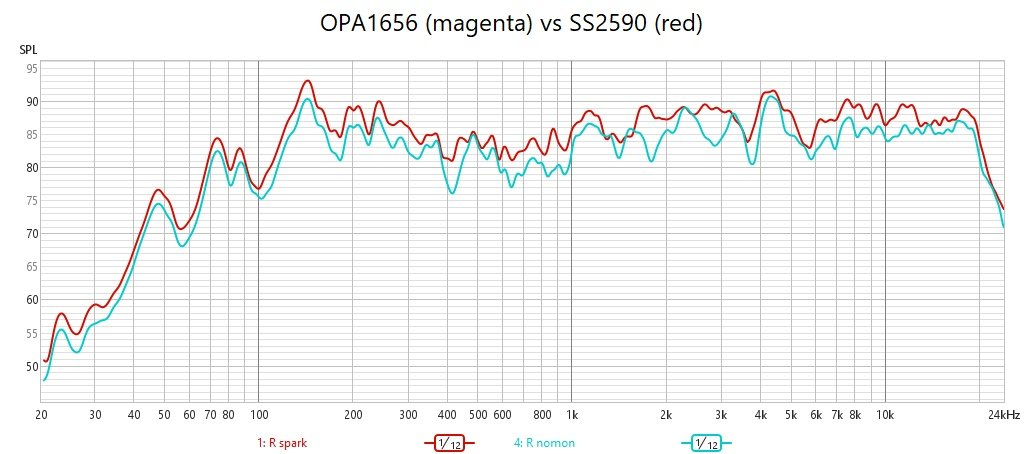Quote:
This one is hard to roll blindly...whatever in my Spitfire DAC or on the Prodigy HD2, it would make a loud crackling noise when my fridge motor turns on/off or someone turns off my bathroom neon...I also had it checked w/ an oscilloscope by a pro, and it was oscillating in the Mhz range. Clearly not for blind rolling IME.
LT1363 is a far better candidate
Well it sounds like the fridge motor is throwing out both a spike and additional RF noise.... and the Power Supply is not up to controlling it.
So my take on that type of issue would be... regardless of the opamp this will have an impact (some more audible than others) - so first fix the PSU - and if the LT1028 is particularly sensitive to it - us it as your sensor, your "canary".
1) Put something on the power line to absorb the spike (surge protector, power regulator, isolating transformer, regenerator or UPS) - pick your flavour and budget... but a common computer sine wave UPS can help (make sure it is a full sine wave version! otherwise it is nasty).
2) Put some chokes on either end of your power cables (all power cables going into and out of ANY interconnected piece of equipment in your rig. (Once the noise is in there, it can pollute your ground and spread to other components via interconnects - even if the components are off)
There are articles on the web about eliminating RF noise - also lots of articles from Ham Radio people (they suffer worse than Audio people do from RF issues... for obvious reasons - they are working within the RF bands!)
Once the noise is eliminated from the LT1028 - then you can listen to see if you like to OPAMP, and you can try your other favourites - you may find they have improved....
I just recently went through extensive choking of all in and out lines of my rig - and it has definitely helped! - I was previously getting some hash at low levels in my RMAA measurements (which helped me to identify the problem) - the chokes on all the lines have eliminated that - and grounding everything to a common ground has eliminated a low level hum problem as well - and on the RMAA graphs the harmonics of the 50Hz power have dropped to less than half what they were before.
Some say that the biggest gains in Audio quality all come down to power supply - both adequacy (enough in a timely manner when required) - and cleanliness.... they may be right.
























